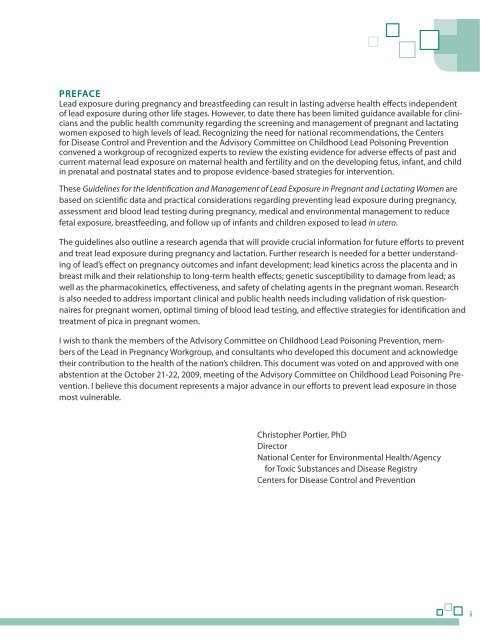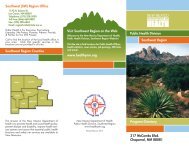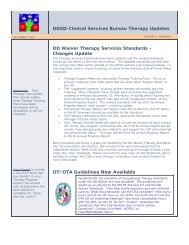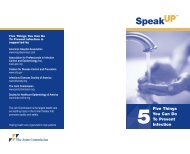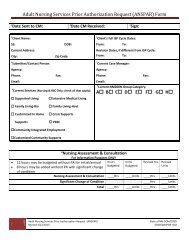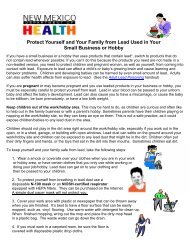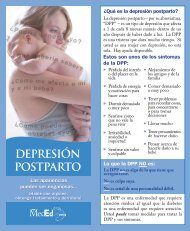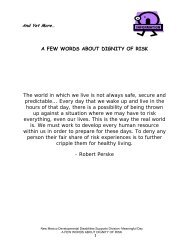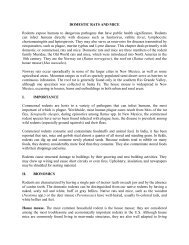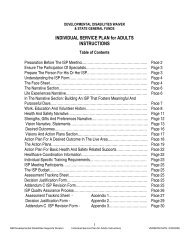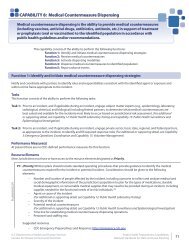Guidelines for the Identification and Management of Lead Exposure
Guidelines for the Identification and Management of Lead Exposure
Guidelines for the Identification and Management of Lead Exposure
Create successful ePaper yourself
Turn your PDF publications into a flip-book with our unique Google optimized e-Paper software.
PREFACE<strong>Lead</strong> exposure during pregnancy <strong>and</strong> breastfeeding can result in lasting adverse health effects independent<strong>of</strong> lead exposure during o<strong>the</strong>r life stages. However, to date <strong>the</strong>re has been limited guidance available <strong>for</strong> clinicians<strong>and</strong> <strong>the</strong> public health community regarding <strong>the</strong> screening <strong>and</strong> management <strong>of</strong> pregnant <strong>and</strong> lactatingwomen exposed to high levels <strong>of</strong> lead. Recognizing <strong>the</strong> need <strong>for</strong> national recommendations, <strong>the</strong> Centers<strong>for</strong> Disease Control <strong>and</strong> Prevention <strong>and</strong> <strong>the</strong> Advisory Committee on Childhood <strong>Lead</strong> Poisoning Preventionconvened a workgroup <strong>of</strong> recognized experts to review <strong>the</strong> existing evidence <strong>for</strong> adverse effects <strong>of</strong> past <strong>and</strong>current maternal lead exposure on maternal health <strong>and</strong> fertility <strong>and</strong> on <strong>the</strong> developing fetus, infant, <strong>and</strong> childin prenatal <strong>and</strong> postnatal states <strong>and</strong> to propose evidence-based strategies <strong>for</strong> intervention.These <strong>Guidelines</strong> <strong>for</strong> <strong>the</strong> <strong>Identification</strong> <strong>and</strong> <strong>Management</strong> <strong>of</strong> <strong>Lead</strong> <strong>Exposure</strong> in Pregnant <strong>and</strong> Lactating Women arebased on scientific data <strong>and</strong> practical considerations regarding preventing lead exposure during pregnancy,assessment <strong>and</strong> blood lead testing during pregnancy, medical <strong>and</strong> environmental management to reducefetal exposure, breastfeeding, <strong>and</strong> follow up <strong>of</strong> infants <strong>and</strong> children exposed to lead in utero.The guidelines also outline a research agenda that will provide crucial in<strong>for</strong>mation <strong>for</strong> future ef<strong>for</strong>ts to prevent<strong>and</strong> treat lead exposure during pregnancy <strong>and</strong> lactation. Fur<strong>the</strong>r research is needed <strong>for</strong> a better underst<strong>and</strong>ing<strong>of</strong> lead’s effect on pregnancy outcomes <strong>and</strong> infant development; lead kinetics across <strong>the</strong> placenta <strong>and</strong> inbreast milk <strong>and</strong> <strong>the</strong>ir relationship to long-term health effects; genetic susceptibility to damage from lead; aswell as <strong>the</strong> pharmacokinetics, effectiveness, <strong>and</strong> safety <strong>of</strong> chelating agents in <strong>the</strong> pregnant woman. Researchis also needed to address important clinical <strong>and</strong> public health needs including validation <strong>of</strong> risk questionnaires<strong>for</strong> pregnant women, optimal timing <strong>of</strong> blood lead testing, <strong>and</strong> effective strategies <strong>for</strong> identification <strong>and</strong>treatment <strong>of</strong> pica in pregnant women.I wish to thank <strong>the</strong> members <strong>of</strong> <strong>the</strong> Advisory Committee on Childhood <strong>Lead</strong> Poisoning Prevention, members<strong>of</strong> <strong>the</strong> <strong>Lead</strong> in Pregnancy Workgroup, <strong>and</strong> consultants who developed this document <strong>and</strong> acknowledge<strong>the</strong>ir contribution to <strong>the</strong> health <strong>of</strong> <strong>the</strong> nation’s children. This document was voted on <strong>and</strong> approved with oneabstention at <strong>the</strong> October 21-22, 2009, meeting <strong>of</strong> <strong>the</strong> Advisory Committee on Childhood <strong>Lead</strong> Poisoning Prevention.I believe this document represents a major advance in our ef<strong>for</strong>ts to prevent lead exposure in thosemost vulnerable.Christopher Portier, PhDDirectorNational Center <strong>for</strong> Environmental Health/Agency<strong>for</strong> Toxic Substances <strong>and</strong> Disease RegistryCenters <strong>for</strong> Disease Control <strong>and</strong> Preventioni


